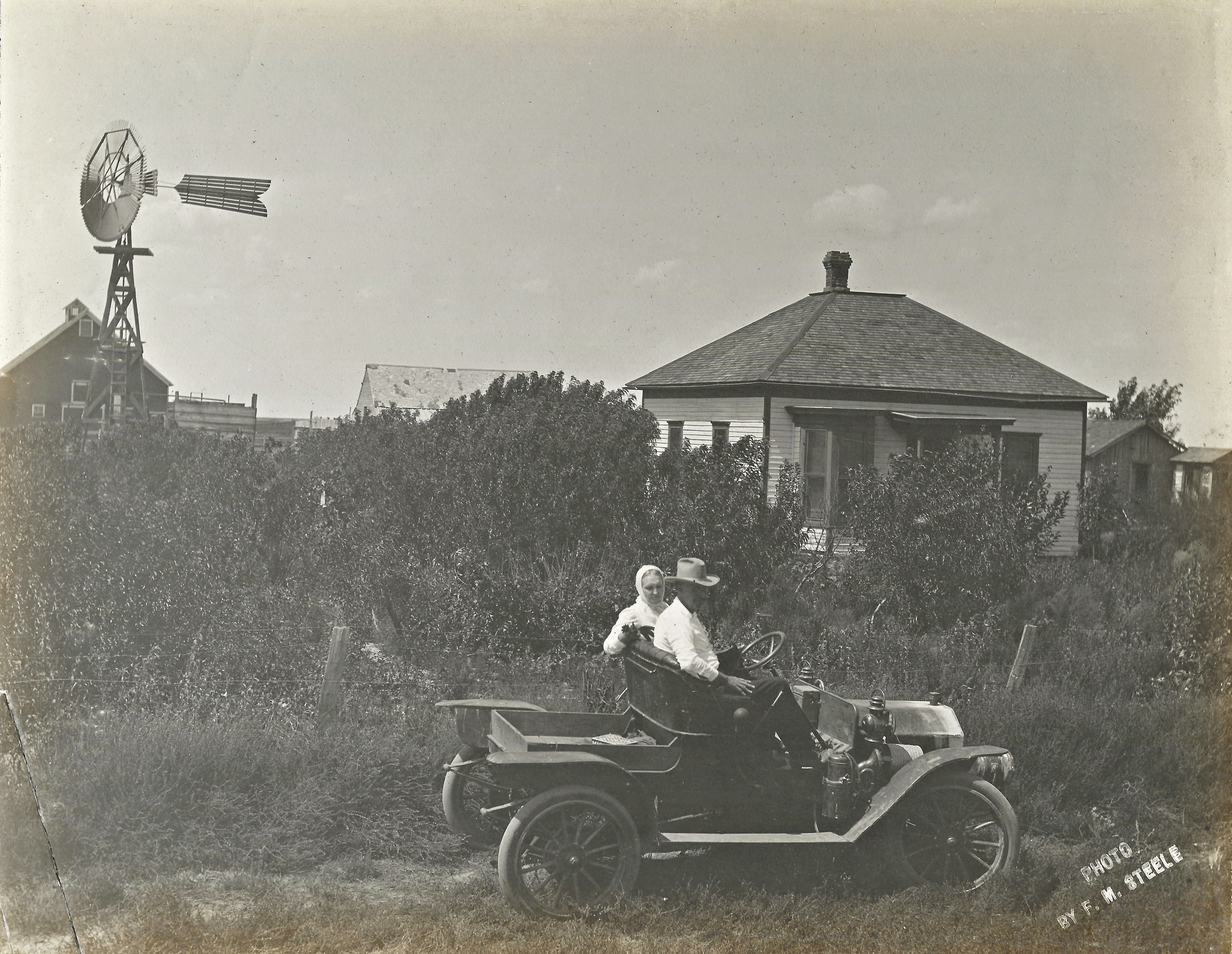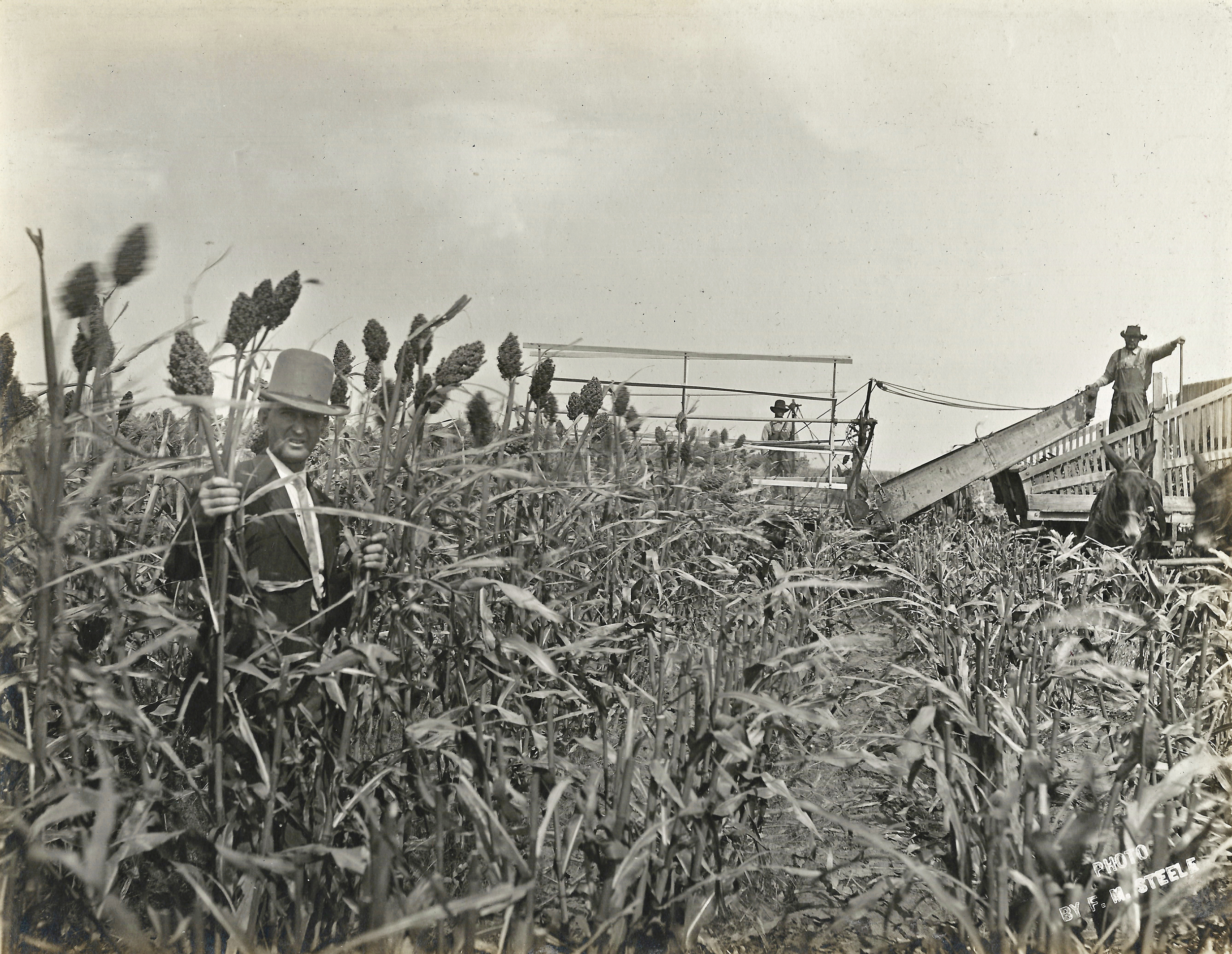





















The Minor twins "lost" in a field of Kaffir corn grown by doctor Minor in 1912.
Lorene and Loring Miner - (Pill & Sis)

In the right foreground, man with hat on, coat, top buttoned, right arm to side is Gene Murphy

From the 1930 Edition of the Sublette Monitor -
Above is pictured a session of the district court in the former county seat.
Reading from left to right (top row): The late "Bill" Lucas, Sheriff: Myrtle Rice, Court Reporter: The late Judge William Howard Thompson: Albert Jasper, Clerk of the District Court and a Christian Preacher; C. G. Dennis, County Attorney and Lawyer in Sublette today;
Second Row: The late T. W. Marshall, Lawyer of New Ulysses; John J. Miller, Pioneer Publisher of the Sublette (then the Santa Fe) Monitor; An unidentified Lawyer; H. W. Stubbs, a Lawyer of Ulysses; H. O. Trinkle, A Lawyer of Garden City; Herbert Rhoades, a Lawyer then of New Ulysses and now of Nebraska; C. E. Vance, A Lawyer of Garden City; Albert Watkins, a Dodge City Lawyer; A. B. Crum, a Lawyer of Lyndon, KS; Richard J. Hopkins, now a Federal Judge; Edgar Foster, a Garden City Lawyer; John Mars, A Santa Fe Lawyer then whose whereabouts is unknown now; The late L. A. Madison, a Dodge City Lawyer; and Ralph Wallace, a Satanta Merchant.
Believe the Calendar to be November 1912.

Jim Patrick had built The Gables, a three-story Prairie Palace that came to be a landmark. The carpenter contractor was J. D. Garlock of Garden City, Kansas, the grandfather of Pauline Minor of Sublette. It was located just across the road south from the townsite of Santa Fe, at the end of main street. A two-story well house with the windmill on top contained a tank on its upper floor into which the water was pumped. The water then flowed into the house creating, in effect, a pressurized water system.
Wilma (Miller) Preedy, in her handwritten memoirs remembered The Gables as a beautiful place.
Needing attention, the house was sold at auction to Hank Hemker and Joe Meksch who razed it in the late 1930s or early '40s. The maple flooring and other parts were used in several homes in Sublette.

After the wheat was cut by the header, header barges were used to haul the wheat to where the bundles were pitched by hand onto a stack. Later, a threshing outfit would pull up to the stacks and separate the grain from the chaff. A water wagon, left, provided a constant supply of water for the thirsty steam engine. The outfit shown here was operating on the John Hutchinson place 3 miles east of Satanta. Rollie Wright can be seen leaning on a pitchfork at the far left.

From 1930 edition of Sublette Monitor -
Santa Fe pioneers fought hard for a railroad for Haskell County, but when it came it missed the former county seat. So the county seat moved to the railroad. Above is shown part of the adjustment to new development. Jas. S. Patrick's office was moved to Satanta; S. E. Caves store to Sublette. Building at center left is the Rutledge hotel. Building with arches and railing is the courthouse at Santa Fe.

Sublette, 1912.
Citizens turn out near the newly excavated foundation for the Rutledge Hotel. The Rutledge tent restaurant/hotel for railroad workers can be seen at left. The tent was set up in 1912 on the corner east of the present McCoy Grain Elevator to provide sleeping quarters for and a place in which to serve meals to the men who were building the Santa Fe Rd.

From 1930 edition of Sublette Monitor -
After building railroads in their mind's eyes for many years, Haskell County citizens in 1912 saw the culmination of their dreams when Santa Fe Railroad laid rails from Doge City to Elkhart. Above is shown the construction crew crossing the plains in Haskell County. This railroad will be extended to connect with the Santa Fe's lines at Colmer, NM, and undoubtedly will become the main transcontinental Santa Fe route.